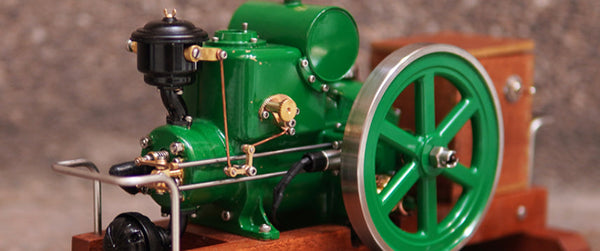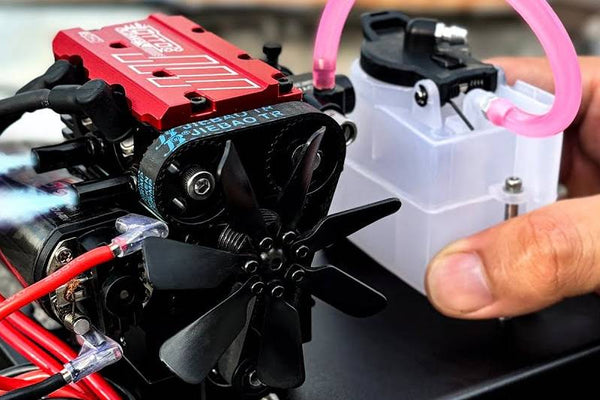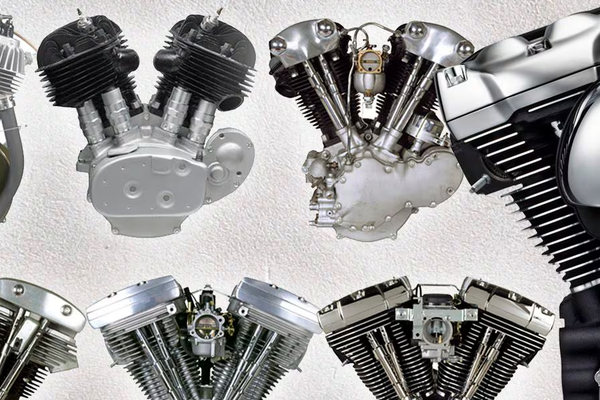OHV, OHC, SOHC und DOHC sind üblicherweise Abkürzungen für verschiedene Bauarten des Ventiltriebs von Automobilmotoren. Der Hauptunterschied liegt in der Position der Nockenwelle.
Die Bezeichnung OHV (Over Head Valve) bezieht sich auf eine Motorkonfiguration, bei der sich die Nockenwelle im Zylinderblock befindet und die Ventile über Stößelstangen betätigt werden. OHC (Over Head Cam) hingegen bezeichnet eine Bauart, bei der sich die Nockenwelle im Zylinderkopf befindet und die Ventile direkt betätigt werden. Es gibt auch DOHC (Double Overhead Cam).
Die verschiedenen Ventiltriebkonstruktionen der vier Motortypen haben jeweils Vor- und Nachteile. Der altmodische Stößelstangenmotor ist bei Muscle-Car-Fans nach wie vor beliebt, während jüngere Enthusiasten eher zum DOHC-Motor tendieren.
In diesem Artikel werden dann alle vier Ventiltriebkonfigurationen genauer betrachtet und die wichtigsten Unterschiede zwischen ihnen erläutert.
OHV (obenliegendes Ventil)
Bei einem OHV-Motor befindet sich die Nockenwelle unten im Zylinder und die Ventile oben. OHV-Motoren sind bekannt für ihre Robustheit und Langlebigkeit und wurden in frühen amerikanischen Automobilen, einigen Lastwagen und Traktoren eingesetzt.
Aufgrund ihrer Bauart werden OHV-Motoren in modernen Kompaktwagen in der Regel nicht eingesetzt. OHV-Motoren benötigen viele bewegliche Teile mit einer hohen Masse, was zu einer größeren Massenträgheit der Ventile führt. Dadurch wären sie nicht so effizient wie ein kleiner OHV-Motor. Die OHV-Bauart eignet sich daher besser für größere V6- oder V8-Motoren .
OHC (obenliegende Nockenwelle)
Bei der OHC-Bauweise ist die Nockenwelle oben am Zylinder angeordnet. Der Vorteil dieser Bauweise besteht darin, dass die Ventile nahezu direkt von der Nockenwelle betätigt werden, was eine gute Ventilöffnungs- und -schließgenauigkeit bei höheren Drehzahlen ermöglicht.
Im Vergleich zu OHV-Motoren sind OHC-Motoren jedoch komplexer, wodurch auch ihre Steuerketten und -systeme länger und komplizierter sind. Die komplexe Ventilkonstruktion erschwert die Wartung und führt zu höheren Wartungskosten.
SOHC (Single Overhead Camshaft)
SOHC ist ein System mit einer obenliegenden Nockenwelle (SOHC), bei dem die Nockenwelle oben auf dem Zylinder montiert ist und für das gleichzeitige Öffnen und Schließen der Einlass- und Auslassventile verantwortlich ist.
Die SOHC-Bauweise ist einfacher, kostengünstiger und wartungsfreundlicher als die DOHC-Bauweise, weshalb SOHC-Motoren häufig in sparsamen Familienautos oder Motorrädern eingesetzt werden. Da sie jedoch nur eine Nockenwelle besitzen, sind sie nicht so flexibel wie DOHC-Motoren und weisen Einschränkungen bei der Optimierung von Steuerzeiten und Ventilhub auf.
DOHC (Doppelte obenliegende Nockenwelle)
Der DOHC-Motor ist der komplexeste und teuerste, da er über zwei Nockenwellen am oberen Ende jedes Zylinders verfügt, die jeweils die Einlass- und Auslassventile betätigen.
Diese DOHC-Konstruktion ist komplex, ermöglicht aber auch eine höhere Leistung, mehr Präzision und mehr Flexibilität bei der Abstimmung.
Eine ausreichend präzise Ventilsteuerung und besser geformte Brennräume führen zu einer besseren Kraftstoffverbrennung, was nicht nur den Kraftstoffverbrauch senkt, sondern auch schädliche Emissionen reduziert und moderne Umweltauflagen erfüllt. Deshalb entscheiden sich viele moderne Automobilhersteller für die DOHC-Bauweise.
Die DOHC-Bauweise hat sich aufgrund ihrer Vorteile hinsichtlich präziser Steuerung und hoher Effizienz zum Standard für leistungsstarke und effiziente Benzinmotoren entwickelt, während die SOHC-Bauweise aufgrund ihrer Kostenvorteile weiterhin in sparsamen Fahrzeugen weit verbreitet ist. Die OHV-Bauweise ist in neueren Fahrzeugen hingegen relativ selten und findet häufiger Anwendung in speziellen Bereichen wie großvolumigen V8-Motoren, Motorrädern oder Baumaschinen.






0 Kommentare